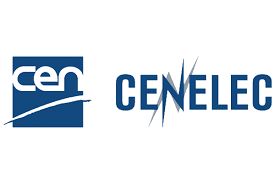Adam Smith
The draft EU AI Act (including both sets of amendments) lays down significant requirements for logging and record keeping in AI systems.

The draft EU AI Act (including both sets of amendments) lays down significant requirements for logging and record keeping in AI systems.

Harmonised cybersecurity standards for AI systems need to be developed and adopted, as a matter of urgency, for the benefit of the European industry, including SMEs and startups, as well as European users and consumers.

My work supports AI trustworthiness characteristics such as robustness, human oversight, accuracy, cybersecurity, and transparency (all those are requirements from the AI Act).

Clarifying for the EU SMEs and European societies the direction they would have to take to evolve and change their product, ensuring their compliance with the regulatory obligations activated in the RED Delegated Act.

I am to positively influence the European market and its infrastructures by benefiting from international contributions (e.g. ISO/IEC) in the controlling of civil security and the protecting of e-identity and e-privacy.

The proposed standard will specify a reference architecture for decentralised identity management, optionally enabled by distributed ledger technology (DLT) and blockchain systems. The reference architecture aims to natural persons and legal entities and addresses concepts, cross-cutting aspects, architectural considerations, and architecture views, including functional components, roles, activities, and their relationships with blockchain and DLT. Technical specifications of the legal identity itself and specifically those of official identity documents issued by competent authorities are outside the scope of this standard, since they are regulated based on its own legislation and technical standards. Likewise, this standard does not aim to define specifications that are within the scope of REGULATION (EU) No 910/2014 OF THE EUROPEAN PARLIAMENT AND OF THE COUNCIL of 23 July 2014 on electronic identification and trust services for electronic transactions in the internal market and repealing Directive 1999/93/EC, currently in force, but to support the Proposal for a REGULATION OF THE EUROPEAN PARLIAMENT AND OF THE COUNCIL amending Regulation (EU) No 910/2014 as regards establishing a framework for a European Digital Identity (COM/2021/281 final, eIDAS 2 Proposal), which includes the provision by Member States of EU Digital Identity Wallets as an enabler for personal identification and qualified trust services, including the issuance of qualified electronic attestations of identity attributes. The standard does not aim to impose any device identification procedure before third parties, without prejudice of any wallet authentication capability required by the eIDAS 2 Proposal. The standard will meet at least the following criteria: - it is technologically neutral; - it is compatible with other relevant international standards on digital identity, such as ISO/IEC 24760, - it is applicable to identity attributes of natural persons, legal entities and things, - the application of this standard allows compliance with current privacy and personal data protection regulation, when appropriate, - it is aligned with the relevant provisions of the eIDAS 2 Regulation proposal, - it enables the deployment of practical, usable, flexible and cost-efficient decentralised identity management systems, - it takes into account the specific needs of small and medium-sized enterprises (SMEs); and, - it is suitable for use in business-to-business relationships with individuals and legal entities.

This Technical Report describes the current situation for medical device traceability in Europe and identifies key elements to establish a comprehensive European traceability system that would provide full traceability to the individual patient level.
This Technical Report applies to medical devices, active implantable medical devices and in vitro diagnostic medical devices, including their accessories. Other devices which are custom-made or intended for clinical investigations and those in vitro diagnostic medical devices which are manufactured in health institutions and for performance evaluation are out of the scope of this document.

Technology transfer refers to the process of conveying results stemming from scientific and technological research to the market place and to wider society, along with associated skills and procedures, and is as such an intrinsic part of the technological innovation process. Technology transfer covers the complex value chain linking research to its eventual societal deployment. When browsing relevant material on the web, it strikes that typically the protection of intellectual property and related licensing are addressed. Yet, it is obvious that innovations, when brought on the market, also will depend on standards and have to consider standardisation.
This guide therefore will address:
• the benefits of standards and standardization to innovators;
• the links of intellectual property, patents and licensing with standardisation
This document provides guidance on addressing research and innovation (R&I) in European standardization activities and deliverables.
In accordance with standardisation request M/543 it is necessary to consider the "Documentation and/or marking regarding information relating to material efficiency of the product taking into account the intended audience (consumers, professionals or market surveillance authorities)". This standard facilitates by describing requirement for providing appropriate information.

In accordance with standardisation request M/543 it is necessary to consider the "Use and recyclability of Critical Raw Materials to the EU, listed by the European Commission". This standard facilitates this requirement by describing appropriate information on critical materials.

This European Standard (EN) provides a general methodology for assessing the proportion of recycled material in energy related products.
